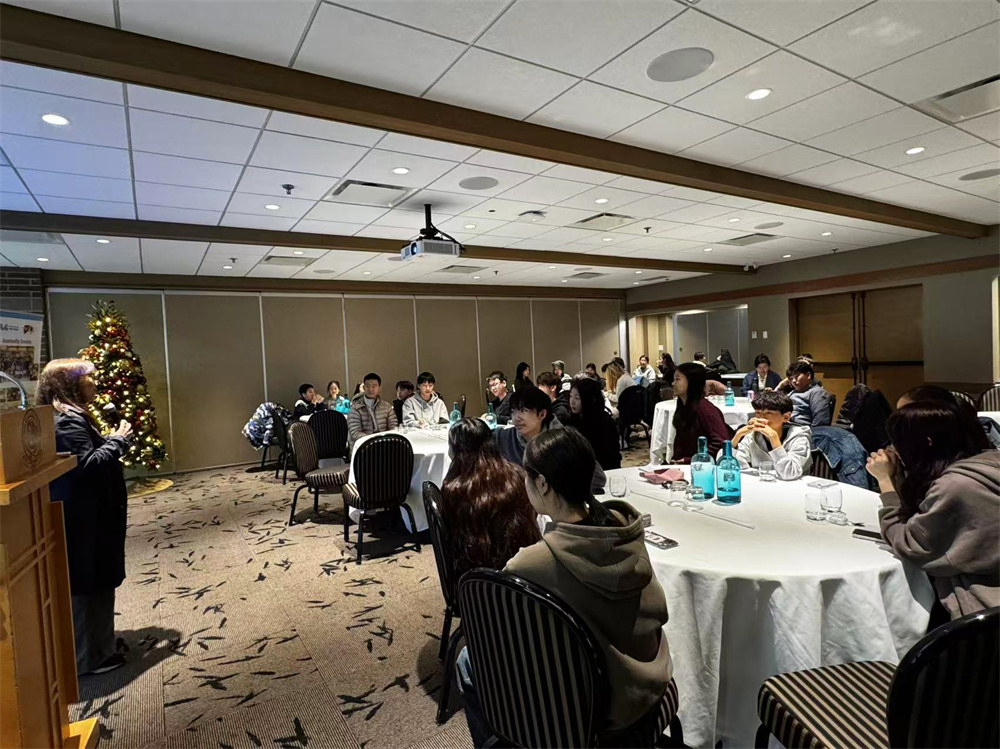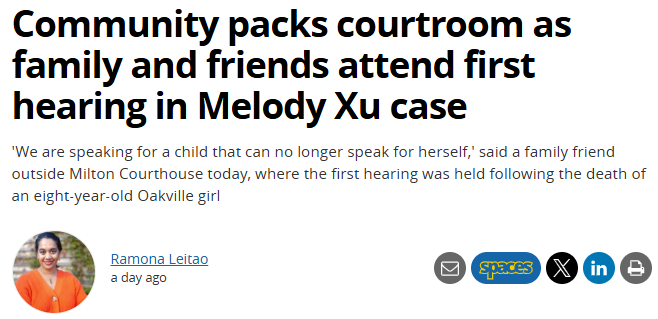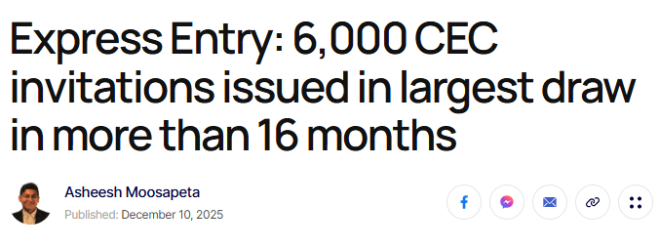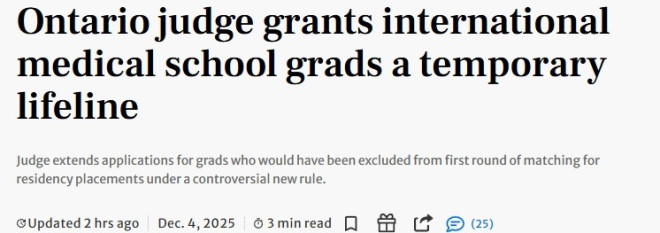安省审计长谢莉·斯彭斯(Shelley Spence)本周义正言辞的声明:省政府13亿加元的“技能发展基金”(Skills Development Fund)在运作上既不公平、也不透明,更谈不上负责任。

Ontario’s Auditor-General Shelley Spence delivered a damning verdict this week: the province’s $1.3-billion Skills Development Fund has not been run in a fair, transparent, or accountable way.
审计报告显示,由安省劳工厅办公室批准的基金申请公司中,有一半以上,即总额高达7.42亿加元的拨款是在该厅专业人员的评估中被打为“差”“低”或“中等”的公司。与此同时,670份评分较高的公司申请却没有获得资助批准。而在那些“低分”却幸运中选的申请者中,许多人雇用了说客,直接游说部长办公室以期获得资金分配。
Her report revealed that more than half of the applications chosen by the Minister of Labour’s office — worth $742 million in grants — were ranked “poor,” “low,” or “medium” by the ministry’s own staff evaluators. Meanwhile, 670 high-scoring applications were left unfunded. Many of the lucky “low-ranked” winners had hired lobbyists to plead their case directly to the minister’s office.
对于一个将该基金称为“有史以来最伟大基金项目之一”的安省政府来说,这种情况令人非常不安,它让人明显感到本应用于资助安省劳动力市场的公共资金,在分配过程中却带上了政治偏袒的色彩。
For a government that calls the fund “one of the greatest programs we’ve ever created,” this is troubling. It raises the appearance of political favoritism in distributing public money that was supposed to build Ontario’s workforce.
但对于那些生活在安省多年的人士来说,这类丑闻似曾相识,并不陌生。
Yet for long-time Ontarians, this all feels disturbingly familiar.
十五年前,时称为“培训、学院及大学教育厅”(Ministry of Training, Colleges and Universities)的安省机构推出了“第二职业”(Second Career)计划。该计划于2008年启动,旨在帮助在全球经济衰退中失业的雇员接受培训以再就业。和今天的基金一样,“第二职业”计划诞生于经济危机之中,但也同样很快因丑闻而声誉受损。
Fifteen years ago, the province’s training ministry — then called the Ministry of Training, Colleges and Universities — ran the Second Career program, launched in 2008 to help laid-off workers retrain during the global recession. Like today’s fund, Second Career was born from a crisis, and like today’s fund, it was quickly undermined by scandal.
当时,监管机构的检查员发现,一些私立职业学院(其中包括面向华裔社区的学校)领取了政府的资助,却几乎没有提供任何培训课程。一个显著的案例中,检查员震惊地发现某个学院校园内根本没有老师和学生上课培训,而学校对此的解释是,教师带”日托教师”项目的培训生去商场“学习如何买玩具”了,因此没人在校上课。还有一些所谓的“幽灵课堂”,既没有老师也没有学生,学校和学生甚至直接瓜分了资金,却根本没有传授任何技能。
Inspectors at the time uncovered private career colleges, including some targeting the Chinese community, receiving government cheques while providing little or no real training. In one notorious case, inspectors discovered there were no classes on campus at all. A program for aspiring daycare workers claimed that taking students on a trip to the mall to ‘learn how to buy toys’ counted as instruction — leaving classrooms empty with no teachers or students. Some schools and students simply shared the funds without delivering any classes.
十几年前的这一丑闻是自下而上的乱象:一些不法的培训机构和急着拿钱的学生趁着监管薄弱而钻空子。
Back then, the abuse was bottom-up: shady training providers and desperate students exploiting weak oversight.
而今天的丑闻则是自上而下的:部长办公室在游说的影响下,罔顾专业人员的评估结果,做出明显偏袒某些私人机构的决定,且这一现象正是福特政府广泛存在的任人唯亲现象的一个缩影。安省已经爆出过多起类似丑闻,这些案例中那些与省长本人或其政党关系密切的企业或个人获利颇丰,最典型的就是绿带土地交换案,一些与政府要员关系密切的开发商本可从中获高达数十亿的利益;此外,还有诸多围绕政府合同和人事任命的争议案例。而此“技能发展基金”丑闻难道不是以纳税人基金奖励盟友之风中的又一个典型案例吗?
Today, the problem is top-down: ministerial offices overruling expert assessments, raising suspicions of favoritism and lobbying influence. And it is hard to ignore that this fits a wider pattern under the Ford government. Ontario has already seen several scandals in which those close to the Premier or his party benefited — most notably the Greenbelt land swap, where well-connected developers stood to gain billions, and controversies around government contracts and appointments. The Skills Development Fund is beginning to look like another example of the same culture of rewarding allies at the public’s expense.
培训项目基金不容浪费!安省在技术工种、医疗和科技领域都面临严重的劳动力短缺。劳动力需要货真价实的再培训机会,雇主则需要稳定的人才来源。如果资金可以随意或出于政治动机来分配,整个体系的公信力就会受到严重侵蚀。
Training programs are too important to squander. Ontario faces real labour shortages in skilled trades, health care, and technology. Workers need genuine opportunities to reskill, and employers need pipelines of talent. When money is handed out in ways that look arbitrary or politically driven, the whole system loses credibility.
因此培训基金的甄选过程必须完全透明。每一轮拨款都应公开所有受资助者的名称、他们的评估分数以及培训结果:有多少人接受了培训,又有多少人找到了工作。此外,资金分配的决定应当与政治权势隔离,只有那些能依据如企业能力、培训计划和预期成果等明确标准来评分的公务人员,才应当拥有最终决定权。
The selection process should adopt full transparency. Every round of grants should publish the names of all recipients, their evaluation scores, and follow-up outcomes: how many people were trained, how many found work. Moreover, funding decisions should be insulated from politics. Bureaucrats who score applications based on clear criteria — organizational capacity, training plans, expected outcomes — should make the final calls.
如果做不到这一点,公众就根本无法了解培训项目基金是否真正起到了应有的作用,安省政府也就难免重蹈覆辙,即在每次危机催生的一笔庞大的基金背后,资金大量流出,丑闻爆发,公众信任随之崩塌。
Without that, there is no way for the public to know whether these programs deliver. Moreover, Ontario risks repeating the same cycle every decade: a crisis sparks a big fund, money flows, scandals erupt, and public trust collapses.










































